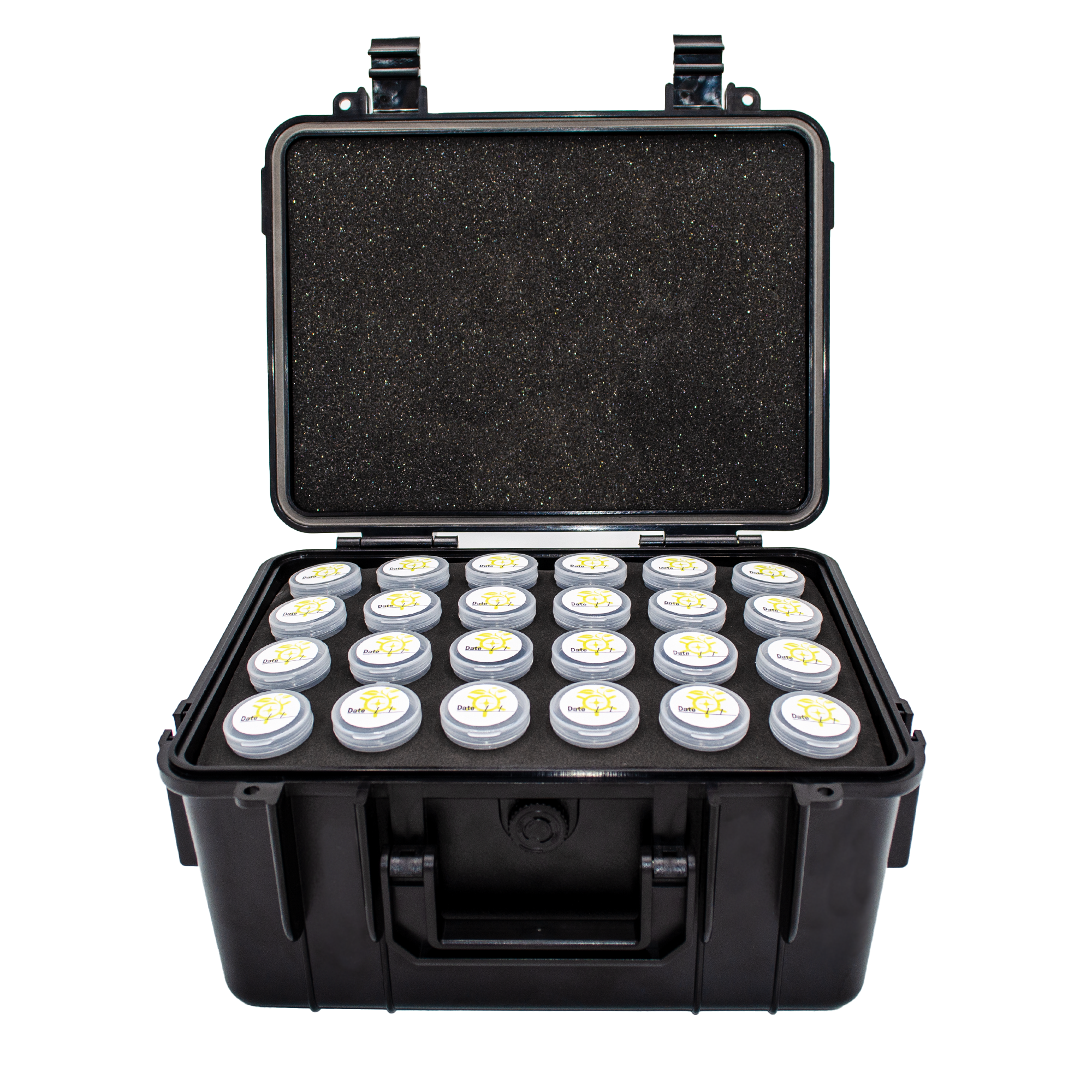
“7 Kid-Friendly Vegetables and herbs to grow at home”

“Kids, let’s grow our own salads!”

Client Reviews
FAQs
How long can seeds be stored?
In proper conditions, our seeds can be stored for 8-25 years with high success rates. Many seeds will still be viable even after 25 years although with lower success rates. We keep our seeds in a temperature controlled environment and sealed air tight with a desiccant. The seeds are monitored to make sure they stay under 8% humidity at all times. These seeds are then packed into food-grade reusable waterproof capsules and sealed in their package with a desiccant to provide the best chance of germination. Most companies embellish their seed viability with claims of "30+ years of storage" and this is only partially true. Given that most companies provide seeds in a paper or plastic bag that is prone to moisture, pests, and temperature changes, and do not consistently monitor them, the chances of seeds being viable over time deteriorates at a much faster rate than seeds stored properly. All that being said- perfect conditions can produce amazing results. In 2012 a 32,000 year old seed that was frozen in permafrost was successfully grown!
How should I store my seeds/seed bank?
Not everyone has access to everything needed for seeds to last hundreds of years, but there are still things you can do to prolong the life of your seeds. Temperature changes are one of the most important factors to consider as it decreases seed viability. Your seed bank is already doing most of the work for you by keeping it air-tight, moisture-controlled by desiccants, and stored in food-grade capsules. All you have to worry about is keeping it out of direct sunlight and heat.
What does heirloom/GMO/organic/open pollinated mean?
All of our seeds are non-GMO, organic, heirloom, or open-pollinated
Heirloom:
Heirloom refers to a type of plant or crop that has been cultivated and passed down through generations within a family or community. These varieties often have historical significance, and they are typically open-pollinated (see below). Heirloom plants are valued for their unique characteristics, flavors, and adaptability. They are typically grown from seeds that have not been crossbred or genetically modified.
GMO (Genetically Modified Organism):
GMOs are organisms whose genetic material has been altered using genetic engineering techniques. In the context of agriculture, GMOs are often crops like corn, soybeans, or cotton that have had specific genes inserted or modified to provide traits such as resistance to pests, tolerance to herbicides, or improved nutritional content. GMOs can be controversial due to concerns about their environmental and health impacts.
Organic:
Organic farming and food production involve the use of agricultural practices that minimize synthetic inputs like synthetic pesticides and fertilizers. Organic farming typically emphasizes soil health, biodiversity, and sustainable practices. Organic foods are grown without the use of genetically modified organisms (GMOs) and are often cultivated with an emphasis on environmental stewardship.
Open-Pollinated:
Open-pollinated plants are those that reproduce through natural pollination, usually by wind, insects, or other natural means. These plants tend to be more genetically diverse and stable compared to hybrids or GMOs. Seeds from open-pollinated plants can be saved from year to year, and they will generally produce offspring similar to the parent plant. Heirloom plants are often open-pollinated.
It's important to note that the distinction between these terms can have implications for the sustainability, environmental impact, and nutritional content of the crops they refer to. Consumers often make choices based on their preferences for these terms, whether they prioritize the preservation of traditional varieties (heirlooms), avoiding genetically modified crops (organic), or supporting sustainable and natural reproduction (open-pollinated).
What's different with indoor growing?
Indoor growing differs from outdoor cultivation by allowing growers to control environmental conditions such as light, temperature, humidity, and airflow, which can optimize plant growth. This method enables year-round cultivation, reduces the impact of external factors like weather and pests, and is well-suited for various plants, including herbs, and vegetables. It often involves the use of artificial lighting, such as LED or HID, to mimic natural sunlight. However, indoor growing typically requires more resources and energy, including electricity for lighting and climate control.
When/where can I plant my seeds?
Anywhere! We give you instructions on how to plant indoors, outdoors, direct sow, and transplant. Outdoor growing is dependent on location and will vary depending on time of year; please click to see our hardiness zone map.
Can anyone grow plants?
Yes! We provide you everything you need except water- cultivating plants is a wonderful and accessible endeavor for all, no matter your experience level. You'll be amazed at the beauty you can nurture with a little care and a green thumb.







